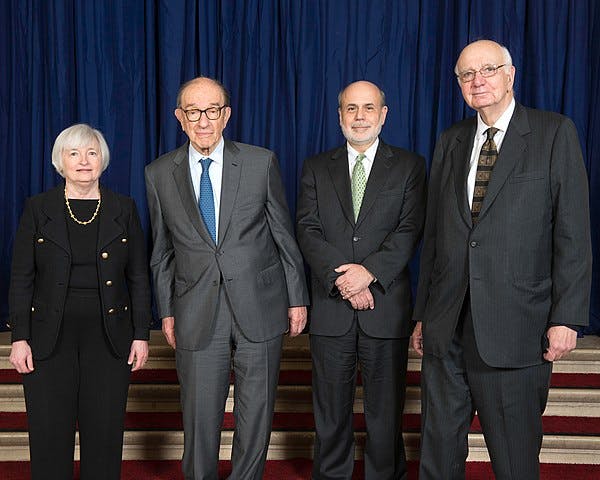Federal Reserve Trapped on the Slippery Slope
As the Fed is pressured to jettison its two percent inflation target, the new goal is being talked up ever higher.

A rising chorus is urging the Fed to move its goal posts in the war on inflation — lifting its inflation target to three percent from the current two. How high might the Fed go? Morgan Stanley’s chief, James Gorman, thinks four percent inflation would make for a “happy land,” the Financial Times reports. The FT’s own Gillian Tett suggests that on inflation “four is the new two.” Yet how did we get to the point where even two percent inflation is considered acceptable?
The three percent goal the Fed’s reportedly weighing would be a 50 percent jump. Mr. Gorman says “we can deal with” four percent as “an appropriate time to pause” the war on inflation. Grant’s Interest Rate Observer has questioned Mr. Gorman’s prediction in 2013 that a financial crisis won’t recur in his lifetime. Grant’s famed editor tells us the road to a 2008-style disaster is institutionalizing high inflation on the order of four percent.
It’s a symptom of the age of fiat money that a consistent pace of price inflation — whether at two percent, three percent, or four percent — is seen as desirable by the financial establishment. It’s actually a kind of theft. It reminds us why the towering Fed chairman who defeated the last wave of runaway inflation, Paul Volcker, warned against setting a numerical target for price increases in the first place, which was back when the two percent goal was taking root.
“I puzzle about the rationale” for the two percent goal, is how Volcker, writing in 2018, put it. Such a “target, or limit, was not in my textbooks years ago,” and he professed to “know of no theoretical justification.” For one thing, he observed, it is “difficult to be both a target and a limit at the same time.” Worse, the ex-Fed chief wrote, is that a two percent inflation rate “would mean the price level doubles in little more than a generation.”
Volcker’s writing recalled an exchange in 1996 between another former Fed chairman, Alan Greenspan, and Treasury Secretary Yellen, then a board member, whence the “ill-advised” two percent target sprouted. Ms. Yellen had asked Mr. Greenspan to “define price stability.” He replied it was when “expected changes in the general price level” do not influence “business or household decisions.” Ms. Yellen next asked: “Could you please put a number on that?”
Under the subsequent chairmanship of Ben Bernanke, and then Ms. Yellen, Volcker explained, Mr. Greenspan’s “entirely appropriate” definition was “translated into a number: two percent.” Thus, Volcker said, the Fed fell “into the trap of assigning such weight to tiny changes in a single statistic.” It soon became a “consensus” among central bankers that this target marked a rate of inflation that was “acceptable, even desirable.”
Volcker traced the scourge to a New Zealand central bank chief, Donald Brash, a “traveling salesman” for the two percent goal. It caught on because central banks’ financial models, “calculated by staff trained in econometrics,” need to be “fed numbers, not principles.” Set it down as another flaw in what James Grant calls the PhD standard. The goal was helped, too, by the lie, Volcker noted, that “a little inflation is a good thing for employment.”
That brings us back to today’s troubles, as the Fed tries to slow job and wage growth to tame the inflation its own policies triggered. Writing from Davos, Ms. Tett says that the “cultural zeitgeist” on inflation has shifted. She warns that the Fed will “crush economic activity” if it stays “truly committed” to get back to two percent. To withstand this kind of pressure, the Fed could use another chairman now of the caliber of Paul Volcker.
Instead, we have Jerome Powell, who in 2020 drew the notice of the Wall Street Journal’s editors when he undertook to overhaul the Fed’s two percent “inflation target.” Prior to his tinkering, the Journal noted, the target was seen as “a ceiling.” The new policy set the Fed to achieve “‘average’ inflation” of two percent. That meant tolerating “periods of faster price rises to compensate for periods when inflation falls short.” Welcome to the slippery slope.

